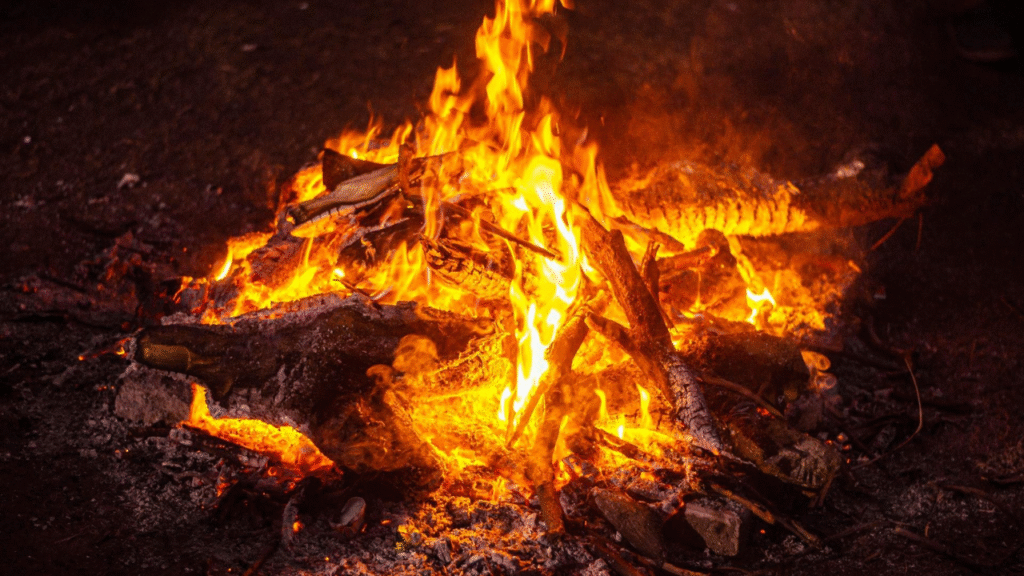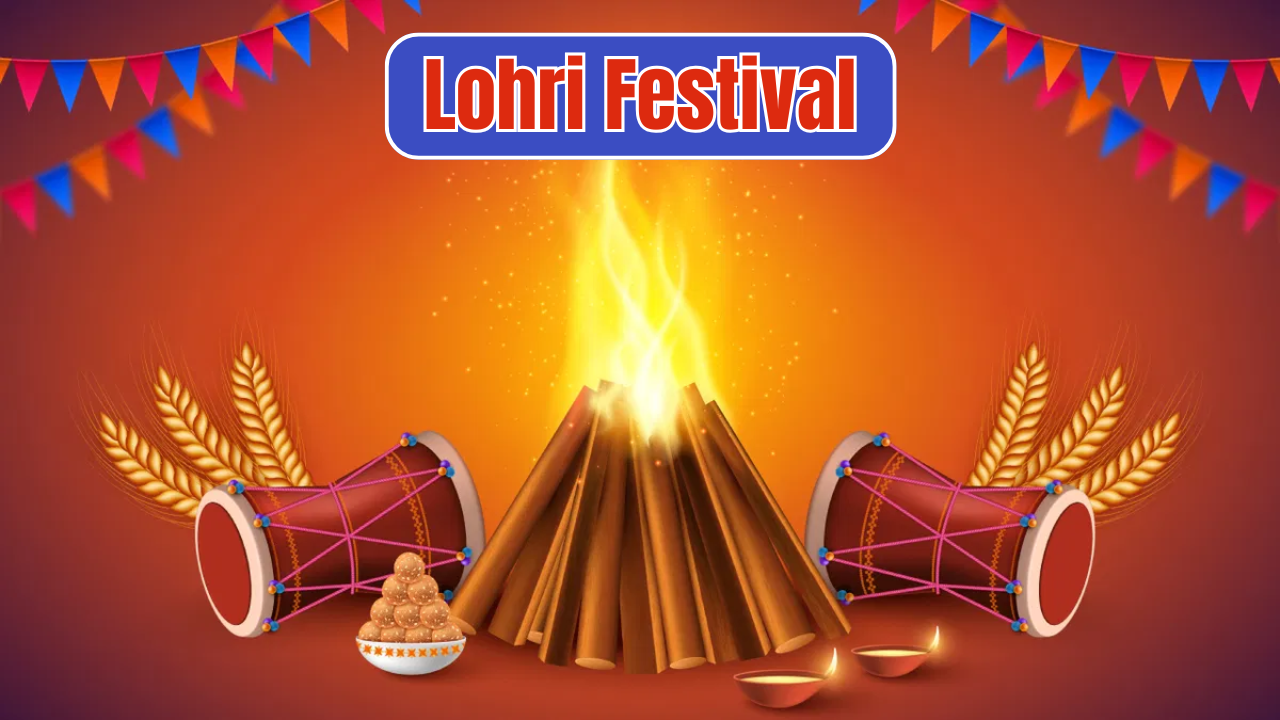1. Introduction
Lohri is one of the most vibrant and symbolic festivals celebrated in North India, especially in Punjab, Haryana, Himachal Pradesh, and parts of Delhi. More than just a winter celebration, Lohri is deeply rooted in agrarian life, marking the end of winter and the beginning of the harvest season.
For farmers, Lohri is not only a cultural ritual but also a thanksgiving to nature, a celebration of prosperity, and a prayer for future abundance.
2. Origin and Historical Roots of Lohri
The word “Lohri” is believed to have come from “Loh,” meaning the iron pan used for making chapatis, symbolizing warmth, food, and sustenance.
Historical Myths and Folklores:
- Linked to Dulla Bhatti, a local Robin Hood figure who rescued girls from abductors and arranged their marriages.
- Originated as a celebration of the winter solstice, when the sun begins its journey towards the north (Uttarayan).
3. Significance of Fire in Lohri
Fire is the central element in the Lohri celebration.
- Represents Agni, the sacred fire, purifying the air and soul.
- A symbol of light over darkness and warmth in the harsh winter.
- People circle the bonfire, offering sesame seeds (til), jaggery (gur), sugarcane, popcorn, and rewri as a tribute.

4. The Harvest Connection: Lohri and Agriculture
Lohri celebrates the ripening of Rabi crops, especially sugarcane, mustard, wheat, and sesame.
For farmers:
- It’s time to rejoice over the yield.
- It reflects gratitude to Surya (Sun God) and Mother Earth for their bounty.
- Celebrated just a day before Makar Sankranti, the official start of the harvesting season.
5. Cultural Symbolism in Rural India
Lohri stands for:
- Joy, community bonding, and abundance
- Protection from evil and purification of the past year
- Honoring natural elements like fire, wind, soil, and water
These traditions stem from a close-knit rural culture that lives in harmony with nature.
6. Why Farmers Consider Lohri Auspicious
Farmers mark Lohri as the turning point in the agricultural calendar. It means:
- A break from months of hard work
- Beginning of financial relief with the upcoming harvest
- Religious importance as a day to seek blessings for health and prosperity
- Community strength, as neighbors join in sharing harvest wealth
7. The Role of Community Gatherings
Lohri is incomplete without community bonfires, folk music, and group dances like bhangra and gidda.
- Promotes solidarity among farmers
- Creates space for collective storytelling, singing, and problem-solving
- Allows farmers to exchange seeds, techniques, and advice
8. Traditional Foods of Lohri and Their Meanings
Every food item served during Lohri is symbolic:
| Food | Significance |
|---|---|
| Gur (jaggery) | Sweetness and good health |
| Til (sesame) | Warmth and fertility |
| Rewri | Circular unity of life |
| Peanuts | Energy and protein |
| Makki di roti & Sarson da saag | Winter crops that represent self-sufficiency |
9. Folk Songs, Dances, and Rituals
Common Songs:
- Celebrate Dulla Bhatti
- Praise the harvest and nature
Rituals Include:
- Circling the fire (parikrama)
- Offering sweets and grains
- Singing songs for newlyweds and newborns
These practices reflect hope, blessings, and positivity.
10. Regional Variations of Lohri Across North India
While Punjab celebrates it with grandeur, other states adapt the celebration:
- Haryana: Rituals for brides and newborns
- Himachal Pradesh: Known as Maghi Lohri, with local customs
- Delhi: Urban adaptation with neighborhood gatherings
- Jammu: Celebrated as a post-harvest social event
11. Religious vs. Cultural Observance
Although rooted in Hindu traditions, Lohri is largely cultural in its celebration.
- Sikhs, Hindus, and even non-religious individuals celebrate it alike
- Emphasis is on family, community, food, and gratitude

12. The Transition from Rural to Urban Celebrations
In cities:
- Lohri is celebrated with high-rise bonfires, DJ nights, and catered sweets
- Cultural loss of agricultural elements
- However, urban Lohri keeps the spirit of unity and joy alive
13. Economic and Social Importance of Lohri for Farmers
Lohri is a time for:
- Evaluating financial returns
- Negotiating seed prices for next crops
- Repaying debts or investing in livestock
Socially, it:
- Reinforces trust among villagers
- Offers a platform for community decisions
14. Lohri and Environmental Concerns
While fire has symbolism, environmentalists have raised concerns:
- Bonfires lead to pollution
- Wasteful use of wood
- Suggested: Eco-friendly Lohri using cow dung cakes and herbal offerings
15. Role of Women and Children in the Festival
- Girls sing songs around the fire, collect “Lohri” (sweets and gifts)
- Women prepare food and lead dances
- Celebrates fertility, family growth, and blessings
16. Punjabi Identity and Lohri
Lohri plays a huge role in the Punjabi diaspora globally.
- Helps Punjabis maintain cultural identity in Canada, UK, US
- Held in Gurdwaras and community halls abroad
- Strengthens generational ties through storytelling and music
17. Agricultural Cycle and Seasonal Timing
Lohri aligns with:
- End of sowing
- Beginning of sun’s northward movement
- Readiness of sugarcane and mustard
It’s a transition point—from waiting and toil to reward and celebration.
18. How Modern Farmers Observe Lohri Today
Despite modernisation:
- Rural farmers still follow rituals
- Combine it with technology-based celebrations (WhatsApp invites, drone light shows)
- Often used to host Kisan Sabhas or promote organic farming
19. Government Policies and Farmer Celebrations
In recent years:
- Government programs align with Lohri, such as crop insurance awareness drives
- Farmer protests and welfare schemes are sometimes timed around festivals for visibility
20. Conclusion
Lohri is not just another festival; it is a pulse of the agrarian spirit. Celebrated with fire, song, and food, it is a moment of gratitude, joy, and togetherness. For farmers, it marks a cycle of sowing and reaping, hardship and hope.
As Lohri evolves into urban settings and modern practices, its core message remains timeless: celebrating life, nature, and the strength of community.
21. FAQs
1. Why is Lohri especially important for farmers?
Because it marks the beginning of the harvest season, bringing financial stability and joy after months of hard work.
2. What are the typical Lohri offerings?
Offerings include sesame seeds, jaggery, peanuts, popcorn, and rewri, all of which are seasonal and symbolic.
3. Is Lohri a religious or cultural event?
Lohri is primarily cultural, though it has religious undertones. People from many faiths celebrate it, especially in North India.
